
Women Burn Hijabs, Cut Their Hair As Protests Spread In Iran After The Death Of Mahsa Amini
Someone is coming,
someone is coming,
someone who in his heart is with us,
in his breathing is with us,
in his voice is with us,
someone whose coming
can’t be stopped
and handcuffed and thrown in jail…
The protests happening in Iran following the death of 22-year-old Mahsa Amini, who was arrested in Tehran by morality police—a dedicated unit that enforces strict dress codes for women, such as wearing the hijab—have taken the international spotlight.
The outpouring of anger for the injustice against women, showcased through burning the hijab and cutting hair, has been met by Iranian authorities with violence and an internet blackout, limiting our knowledge of present-day happenings.
However, what we have seen is enough to terrify and inspire. This is the story of Mahsa Amini. This is the story of all those fighting for justice. This is just the beginning of the fight towards freedom.
Throughout this article, I will be including segments of poetry by Forough Farrokhzad, the first Iranian poet to express her thoughts on discrimination and inequality, describing Iranian women’s untold suffering.
The death of Mahsa Amini in police custody has fueled protests across Iran, in which many women are burning their hijabs and cutting their hair short
Image credits: AlinejadMasih
Outrage over the death of Mahsa Amini in police custody has fueled protests across Iran, in which many women are burning their hijabs and cutting their hair short. The scale, ferocity and feminist nature of these protests makes them comparable to the last demonstrations in 2019. This has led to clashes with security forces trying to subdue them.
Many came to express solidarity with the 22-year-old woman who was arrested in Tehran by morality police on Tuesday evening, September 13, after traveling from Iran’s Kurdistan region to visit relatives in the capital for an apparent breaking of the dress law.
The 22-year-old woman was arrested in Tehran by the morality police on September 13, after going with her family to visit relatives in the capital
Image credits: LeahRemini
Walking unveiled or without wearing a hijab in Iran is a punishable crime under the Islamic Hijab Rules. Since the country’s 1979 Islamic Revolution, Iranian law has required all women, regardless of nationality or religious belief, to wear a hijab that covers the head and neck while concealing the hair. They are also asked to cover their arms and legs with loose clothing.
According to IranWire, human rights activists who have spoken to the family say the police grabbed Mahsa and forced her inside a police vehicle. Her brother, Kiarash, attempted to intervene and was told his sister was being taken to the police station for one hour of “re-education” and to receive “guidance” on her attire.
Reports say that the police grabbed Mahsa and forced her inside a police vehicle, saying that she was being taken to the police station for one hour of “re-education”
Image credits: shokrani_maryam
Kiarash never saw his sister awake again. Iranian officials announced that she died last Friday, September 16, after suffering a “heart attack” and falling into a coma following her arrest. However, her family assured she had no pre-existing heart condition.
“There were only two hours between her arrest and being taken to hospital,” Kiarash told IranWire. Edited security camera footage released by Iran’s state media appeared to show Mahsa talking with a female official, who grabbed at her clothing.
She is then seen holding her head with her hands and collapsing to the ground at the “re-education” center. There are reports that officers beat Mahsa with a baton and banged her head against one of their vehicles.
Iranian officials announced her death on September 16. She suffered a “heart attack” and fell into a coma following her arrest
Image credits: Ftmngt
Her father told pro-reform news outlets on Sunday that she was “fit and had no health problems.” He also said his daughter had suffered bruising to her legs. “They’re lying. They’re telling lies. Everything is a lie… no matter how much I begged, they wouldn’t let me see my daughter,” Amjad Amini told the BBC on Wednesday.
When he viewed his daughter’s body leading up to her funeral, it was entirely wrapped except for her feet and face – though he noticed bruising on her feet. “I have no idea what they did to her,” he said. He believes that the CCTV footage showed an “edited version” of events.
Her family disagree with this conclusion, accusing the officials of lying and malpractice. “I have no idea what they did to her,” said Mahsa’s father
Image credits: from_armyland
CNN reported that an aide to Supreme Leader Ali Khamenei promised a “thorough investigation” into Mahsa’s death during a meeting with her family. Abdolreza Pourzahabi, Khamenei’s representative in Iran’s Kurdish province, hoped the family showed “good will to help bring back calm in society.”
During a news conference, Greater Tehran Police Commander Hossein Rahimi denied “false accusations” against the Iranian police, saying they had “done everything” to keep Mahsa alive. He added that Mahsa had not been harmed physically during or after she was taken into custody, and called her death “unfortunate.”
Thousands took to the streets following her death, with women unveiling themselves, burning their hijabs and publicly cutting their hair
Image credits: vrenyv
And this is I
a woman alone
at the threshold of a cold season
at the beginning of understanding
the polluted existence of the earth
and the simple and sad pessimism of the sky
and the incapacity of these concrete hands.
Thousands took to the streets, with videos of protests emerging from dozens of towns and cities—ranging from the capital Tehran to more traditionally conservative places like Mashhad. Almost all the provincial towns in Iran’s Kurdish region, including Kermanshah and Hamedan, have seen demonstrations as well.
Image credits: ShinD1982
Footage from the protests shows people chanting, “Women, life, freedom.” Others can be seen setting up bonfires, scuffling with police, or destroying posters of the country’s Supreme Leader, shouting, “Death to the dictator.”
Women have also taken to cutting off their hair in the streets and sharing videos of themselves wielding scissors and mercilessly snapping away at their long locks. It has been seen as a powerful act of defiance against the 1979 Islamic Hijab Rules. Many have bravely chosen to come to the protests unveiled.
Image credits: Ftmngt
In one video in Tehran, young protesters march around a bonfire on the street at night, chanting: “We are the children of war. Come on and fight, and we’ll fight back.” In another video, people can be heard shouting: “No to the headscarf, no to the turban, yes to freedom and equality!” Videos with variations of the tag #MahsaAmini have garnered more than 135 million views on TikTok.
Witnesses told CNN that the Tuesday night demonstrations appeared to be “flash protests,” meaning groups formed and dispersed quickly to avoid run-ins with Iran’s forceful security forces.
Image credits: yaaaaaaa_si_iii
It is believed that, so far, 450 people have been injured in the protests. Human rights groups have reported that at least 9 people have been killed
Image credits: MAHANHF013
“Two young men were hit and beaten up by plainclothes police and anti-riot police, then dragged to the van in front of (the) subway entrance gate,” an eyewitness told CNN. “A wounded girl lying on the sidewalk was taken by ambulance to the hospital, and five others arrested on the north side of Enghelab Square.”
Hengaw said 450 people have been injured in the protests. Human rights groups have reported that at least 9 people have been killed. Among those are a 23-year-old in Urmia and a 16-year-old in Piranshahr who were shot dead by security forces during the demonstrations.
Image credits: Parya_zh
Image credits: maryammmthv
An internet outage—a tactic Iran has previously used to prevent the spread of protests—has been documented following the beginning of the demonstrations
Image credits: moh_w4
An internet outage—a tactic Iran has previously used to prevent the spread of protests—has been documented. On Monday, September 19, “real-time network data showed a near-total disruption to internet connectivity in Sanandaj, the capital of Kurdistan province.” Iran’s minister of communications, Issa Zarepour, said that internet services could be disrupted for “security purposes and discussions related to recent events,” by security forces.
The last time Iran saw such a severe blackout was when authorities tried to contain mass protests in late 2019, after fuel prices increased by as much as 300%. At the time, Iran was taken almost entirely offline, which Oracle’s Internet Intelligence called the “largest internet shutdown ever observed in Iran.”
Image credits: setareH8503
The last time Iran saw such a severe blackout was when authorities tried to contain mass protests in late 2019, after fuel prices increased by as much as 300%
Image credits: ranarahimpour
According to CNN, several Iranian state government websites—including the official sites of the President and of Iran’s Central Bank—were also offline, with the hacker collective Anonymous claiming responsibility. “(Greetings) Citizens of Iran. This is a message from Anonymous to all Iran. We are here and we are with you,” a social media account affiliated with the group tweeted on Tuesday.
“We support your determination for peace against brutality and massacres. We know that your determination stems not from vengeance, but from your longing for justice. All tyrants will fall before your courage. Long live free Iranian women.” The hacker collective also took responsibility for temporarily taking down the website of Iran’s state media news agency Fars on early Wednesday morning. The website has since come back online.
Image credits: paralyzzed98
“The authorities must stop targeting, harassing, and detaining women who do not abide by the hijab rules,” said UN Human Rights Chief Nada Al-Nashif
Image credits: mezzo_____
Acting UN Human Rights Chief Nada Al-Nashif called on Tuesday for a prompt, independent and impartial investigation into Mahsa Amini’s death. She noted that her office had received “numerous, and verified, videos of violent treatment of women” by morality police, who have stepped up their enforcement of hijab rules in recent months.
“The authorities must stop targeting, harassing, and detaining women who do not abide by the hijab rules,” said Al-Nashif, calling for the repeal of all discriminatory laws and regulations that impose mandatory hijab.
Image credits: Slufi3
Image credits: ZedThedumb
Ms. Nashif has also expressed concerns at “the reported unnecessary or disproportionate use of force” against the thousands of people who have taken part in protests since Mahsa’s death, noting the importance of respecting “the right to peacefully exercise freedom of expression, assembly and association.”
The protests show little sign of slowing. Gender-based violence and discrimination against women, including so-called honor killings, continues in Iran
Image credits: bts_bangbang95
The protests show little sign of slowing. Whether Mahsa’s death will become an important moment in the pursuit of freedom for many Iranians or an ember that eventually cools, remains to be seen.
Gender-based violence against women, including so-called honor killings, continues in Iran, and the country’s laws do little to protect them. We will continue to observe the situation as it develops.
Image credits: zeezeezzee
We will continue to observe the situation as it develops and hope that this is the beginning for change
Image credits: Fateme651974601
Why should I stop?
I am a descendant of the trees;
breathing stale air depresses me;
a bird which died advised me to remember the flight;
the ultimate extent of powers is joining
with the bright origin of the sun
and pouring into the understanding of light;
Why should I stop?
27Kviews
Share on FacebookWhat monsters they are! This is not Islam, you idiots! You can't force people for their personal choices! That's such a shame for humanity. Our prophet Muhammad has banned to his society killing of little girls, his wife Hatice was a business woman. He said "Paradise is under the mothers' feet". These guys in Iran are using Islam for their dictatorship. I am hating their bigotry and protesting them.
Brave women and men standing up for basic human rights instead of dictatorship. Good luck to them 💜
Im so happy the world hears about this. And so so sad it took another young life to make it heard. But please - on all your platforms - Instagram, Facebook, Twitter, TikTok, Snap, what ever, share the story of Iran and the horror it lives through since 1979. Make their lives not lost in vain. This is not Islam. This is some stupid idiot totalitarian regime that dictates as it sees fit. Not as the religion it claims to adhere to sees. (I'm not religious - but in essence, the religion was supposed to be peaceful. Some men had to go mess it up.. )
Thank you so much for this well-written piece and for bringing awareness to what is happening to women in Iran. Mahsa’s suffering and subsequent death at the hands of the morality police is both horrifying and tragic. These women should not have to suffer violence under a continued reign of psychotic tyrants. It breaks my heart that these women have to fight for their rights to freedom. This religious terrorist regime is twisting Islam to create fear and hate. I truly pray that there is an end to this regime and that these women can live without fear and abuse.
Now, I know that there are widely disparate opinions about autopsies in the Islamic community. However, in this case, I NEED to know Mahsa Amini’s TRUE cause of death. Was she beaten to death? Was she assaulted? Was she hit so extremely hard she began bleeding internally? Was she thrown against a squad car and suffered a head injury? Did she actually have a heart attack? If so, what caused it, torture by electric shock? Was she tasered, and it hit too close to her heart? I must know exactly what happened. I am just not buying the heart attack excuse, and am leaning toward police brutality, so I need cold hard facts—-and I highly doubt I am alone in that need.
The Iranian people are rising up. I fear for the people of Iran, knowing that the government shut down the internet so the world can't see the horrible atrocities they are doing to their own people. This cant be swept under a rug. And, as someone from Iran pointed out, why is this not headline news everywhere. Why is this not THE story on all the big new outlets. NOTHING on CNN's website, nada , zip, zilch. NOTHING on Fox News. They're both too busy whining about Trump or Biden.
Iran: a plainclothes cop (on a motorcycle) mortifies a strange woman by slapping or beating her with a rod. But the reaction of the street is clearly changing. https://twitter.com/FridaGhitis/status/1573098613089374208
They must protest against those idiots! This s**t is not called Islam!
What monsters they are! This is not Islam, you idiots! You can't force people for their personal choices! That's such a shame for humanity. Our prophet Muhammad has banned to his society killing of little girls, his wife Hatice was a business woman. He said "Paradise is under the mothers' feet". These guys in Iran are using Islam for their dictatorship. I am hating their bigotry and protesting them.
Brave women and men standing up for basic human rights instead of dictatorship. Good luck to them 💜
Im so happy the world hears about this. And so so sad it took another young life to make it heard. But please - on all your platforms - Instagram, Facebook, Twitter, TikTok, Snap, what ever, share the story of Iran and the horror it lives through since 1979. Make their lives not lost in vain. This is not Islam. This is some stupid idiot totalitarian regime that dictates as it sees fit. Not as the religion it claims to adhere to sees. (I'm not religious - but in essence, the religion was supposed to be peaceful. Some men had to go mess it up.. )
Thank you so much for this well-written piece and for bringing awareness to what is happening to women in Iran. Mahsa’s suffering and subsequent death at the hands of the morality police is both horrifying and tragic. These women should not have to suffer violence under a continued reign of psychotic tyrants. It breaks my heart that these women have to fight for their rights to freedom. This religious terrorist regime is twisting Islam to create fear and hate. I truly pray that there is an end to this regime and that these women can live without fear and abuse.
Now, I know that there are widely disparate opinions about autopsies in the Islamic community. However, in this case, I NEED to know Mahsa Amini’s TRUE cause of death. Was she beaten to death? Was she assaulted? Was she hit so extremely hard she began bleeding internally? Was she thrown against a squad car and suffered a head injury? Did she actually have a heart attack? If so, what caused it, torture by electric shock? Was she tasered, and it hit too close to her heart? I must know exactly what happened. I am just not buying the heart attack excuse, and am leaning toward police brutality, so I need cold hard facts—-and I highly doubt I am alone in that need.
The Iranian people are rising up. I fear for the people of Iran, knowing that the government shut down the internet so the world can't see the horrible atrocities they are doing to their own people. This cant be swept under a rug. And, as someone from Iran pointed out, why is this not headline news everywhere. Why is this not THE story on all the big new outlets. NOTHING on CNN's website, nada , zip, zilch. NOTHING on Fox News. They're both too busy whining about Trump or Biden.
Iran: a plainclothes cop (on a motorcycle) mortifies a strange woman by slapping or beating her with a rod. But the reaction of the street is clearly changing. https://twitter.com/FridaGhitis/status/1573098613089374208
They must protest against those idiots! This s**t is not called Islam!

 Dark Mode
Dark Mode 

 No fees, cancel anytime
No fees, cancel anytime 



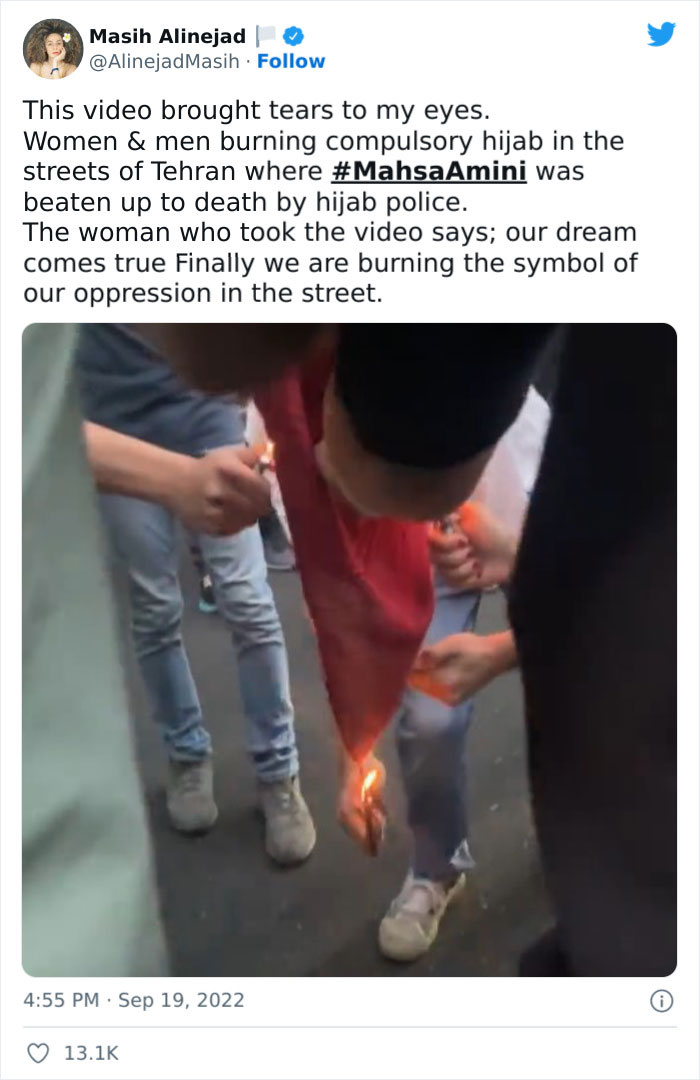
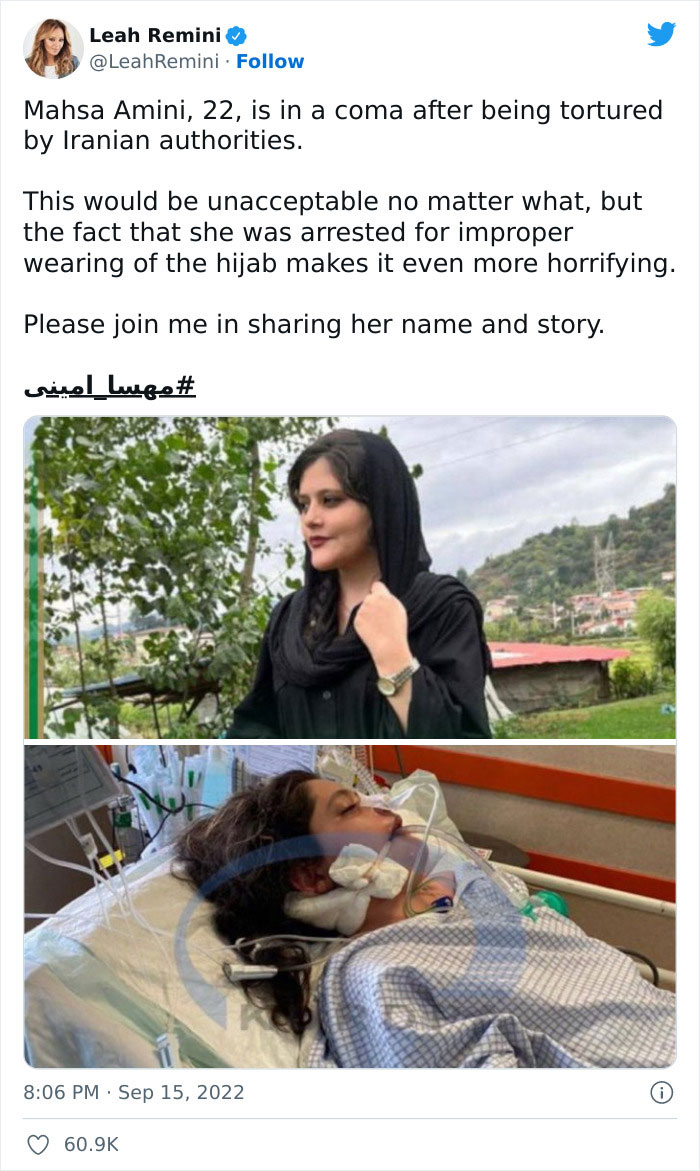
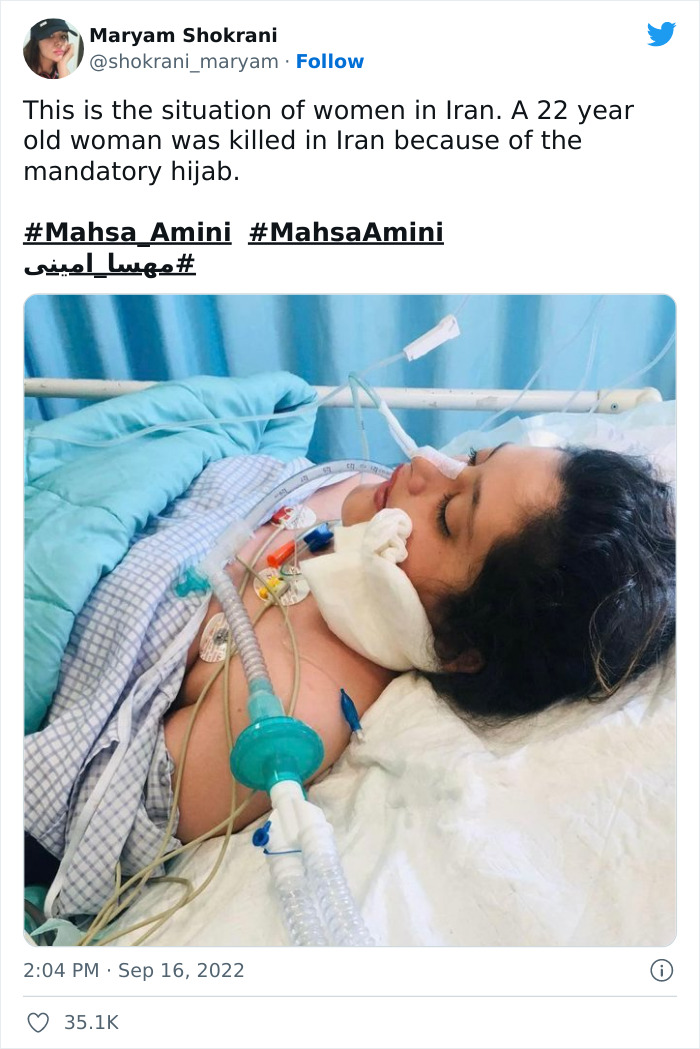
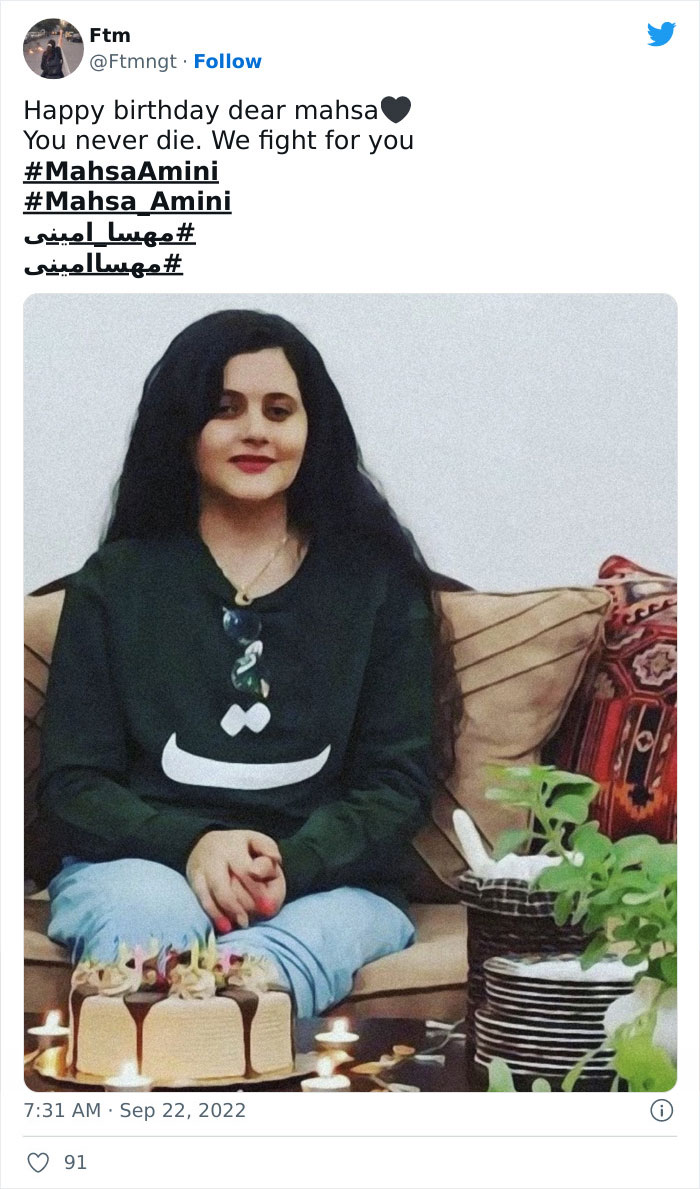
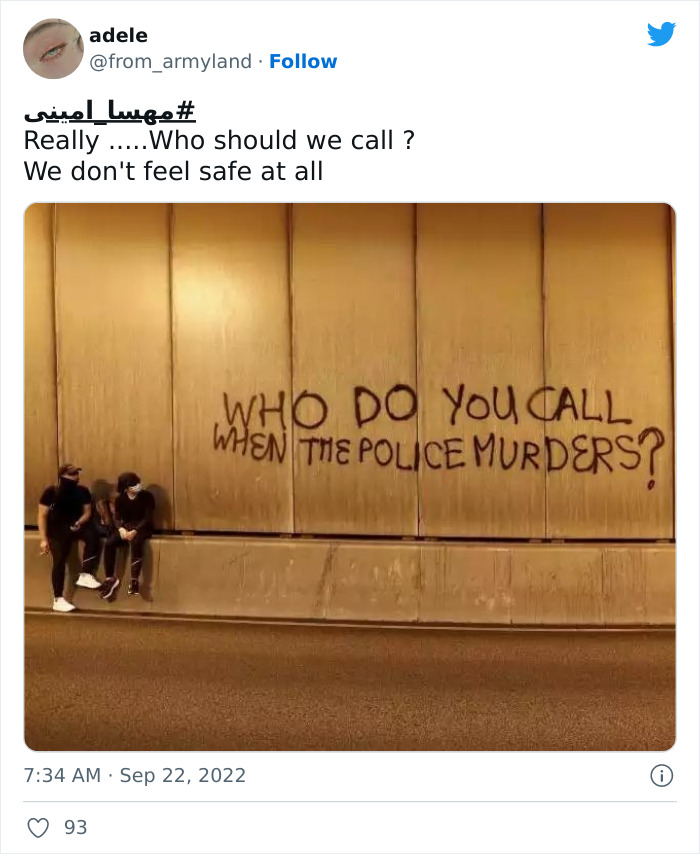
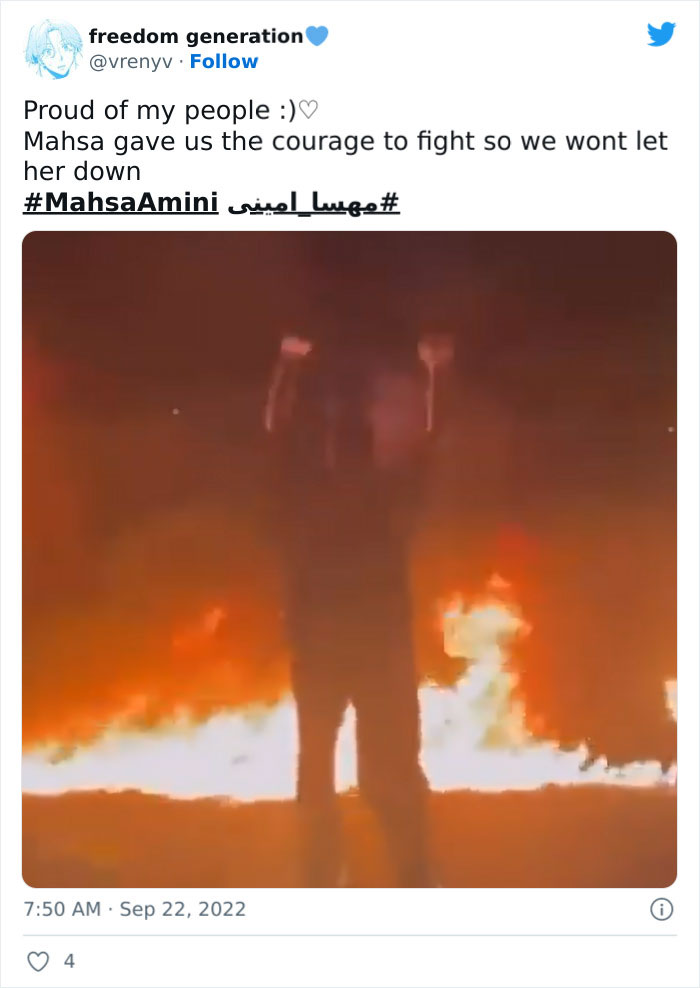
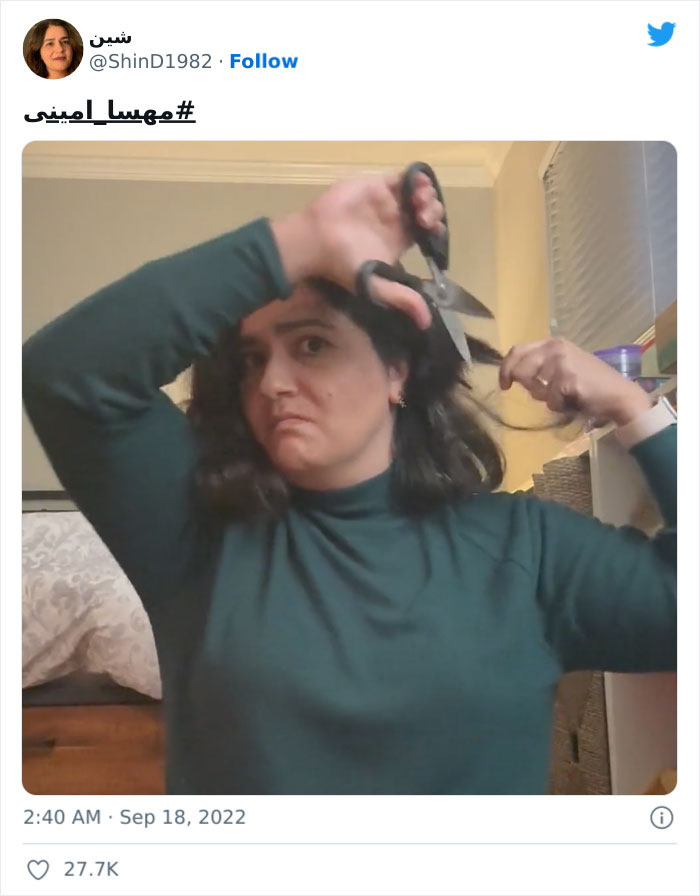
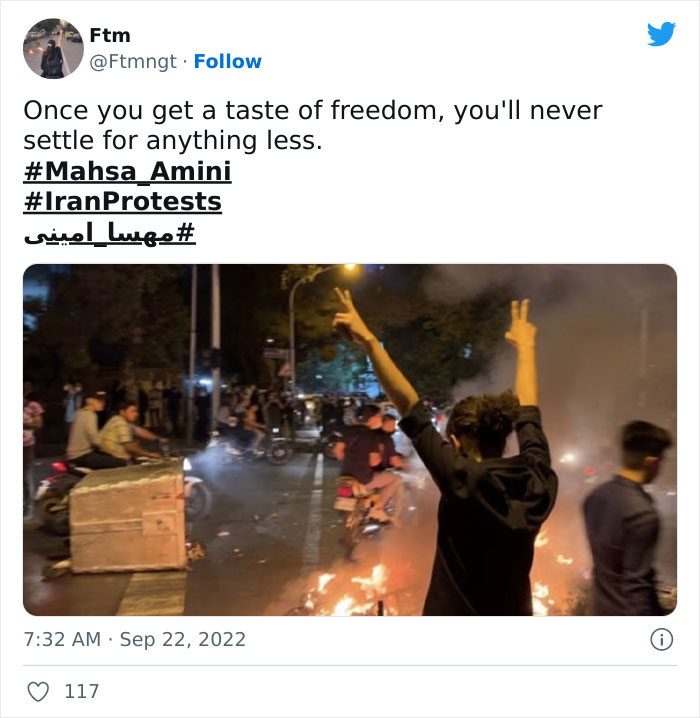
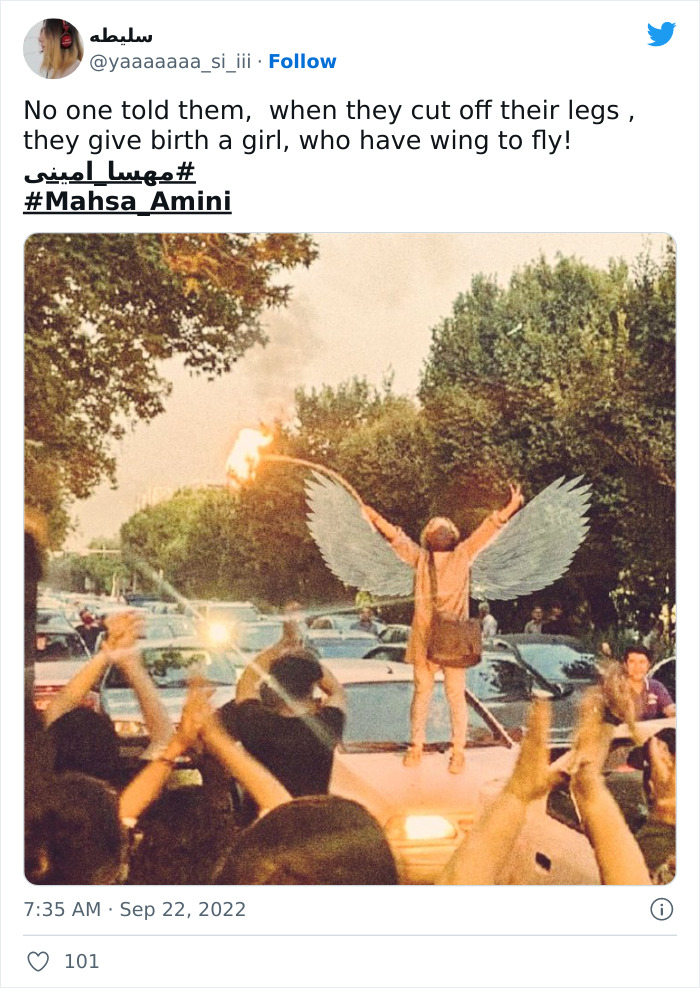
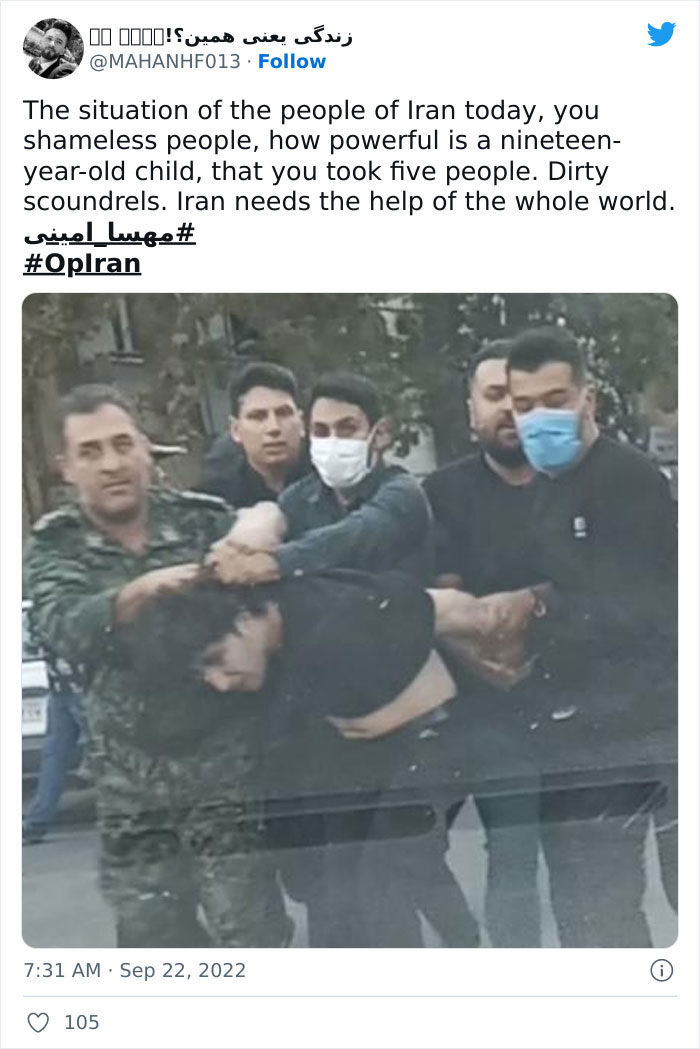
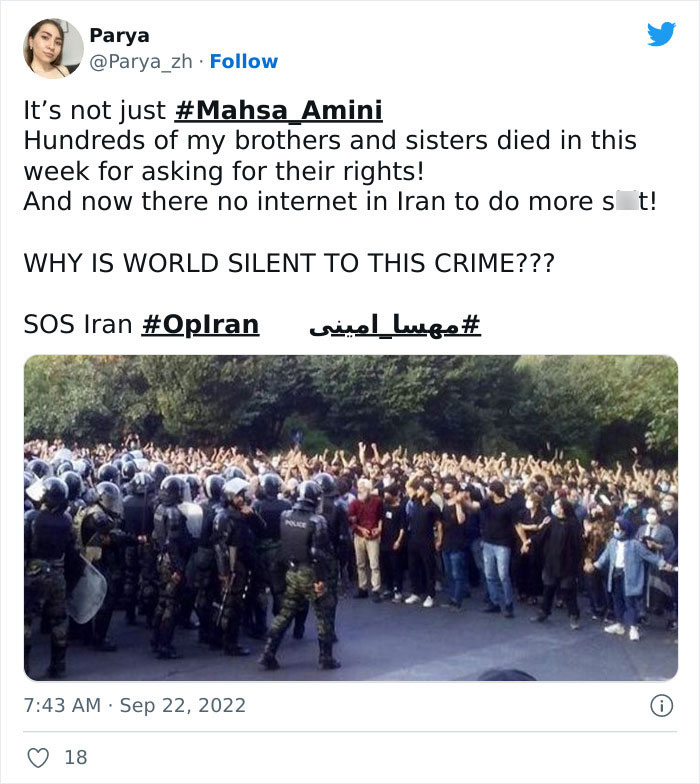
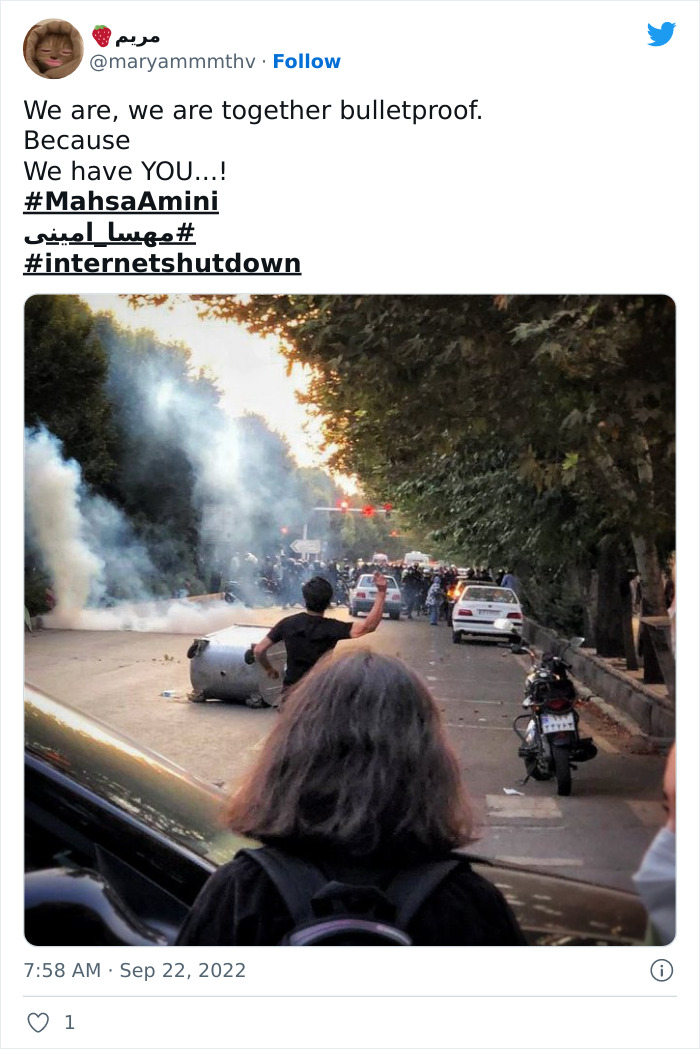
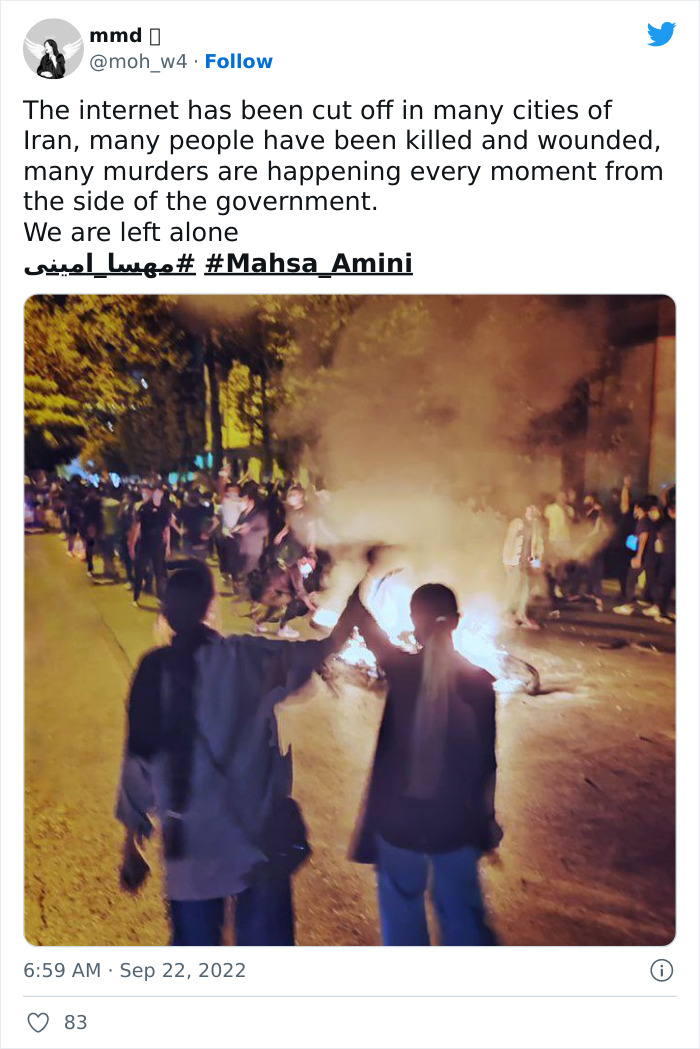
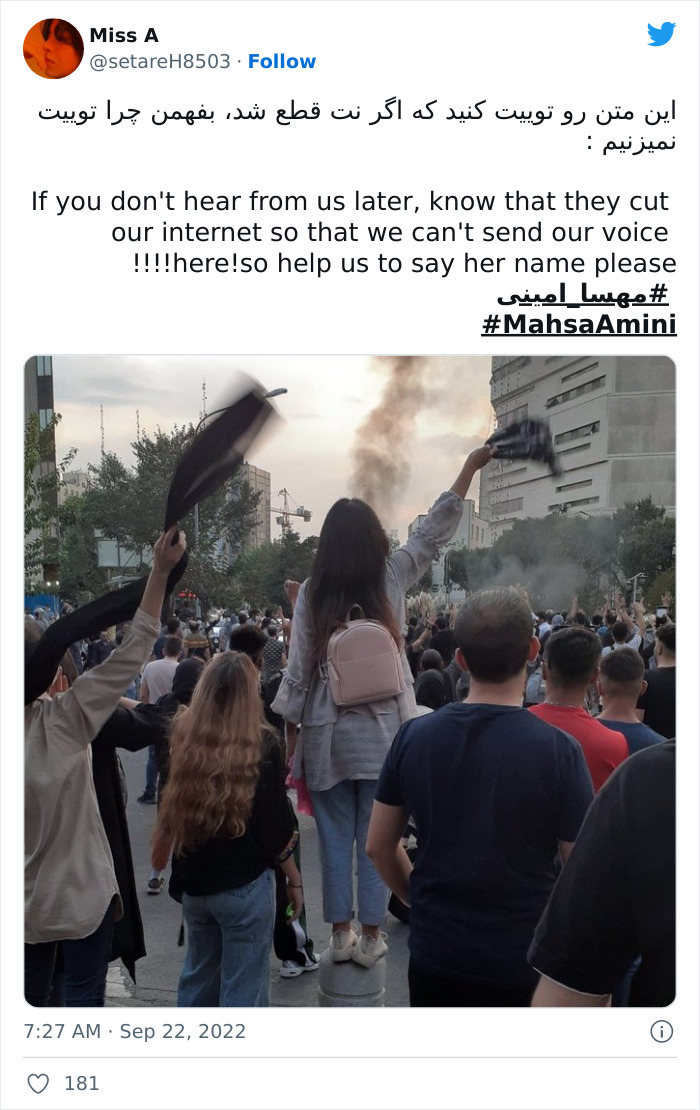
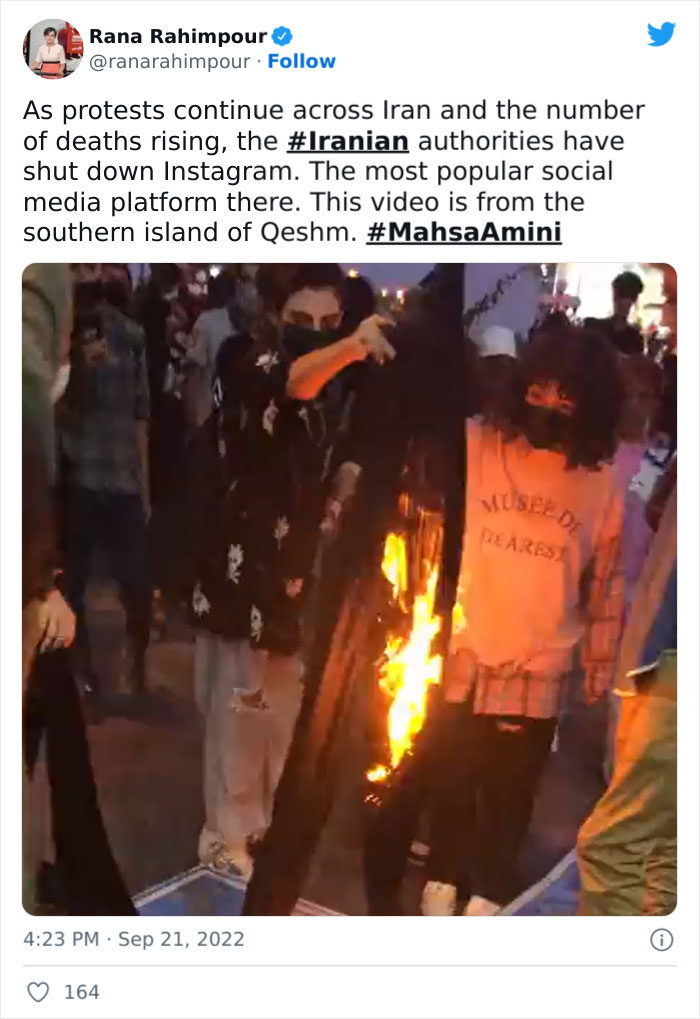
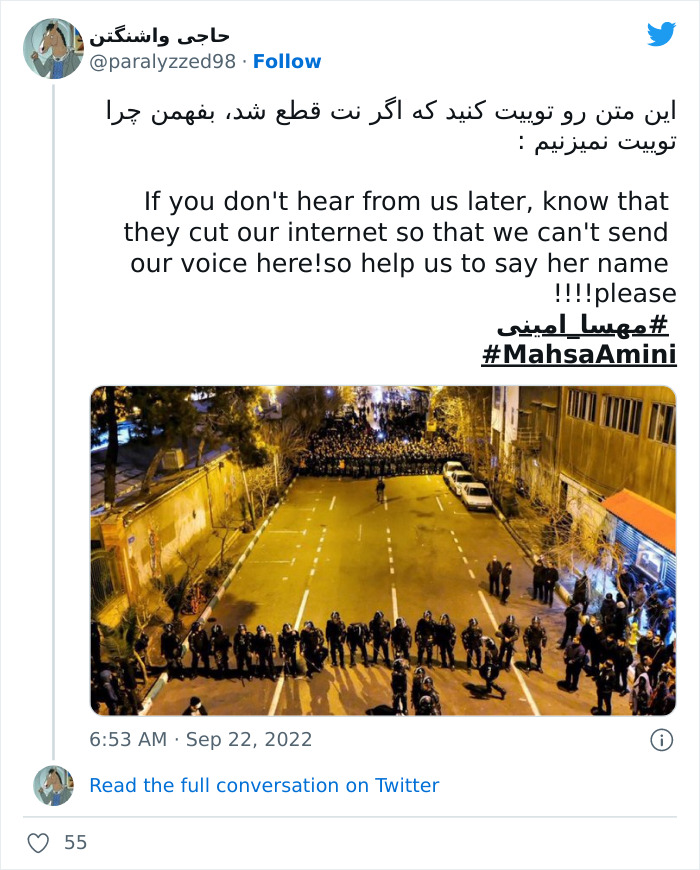
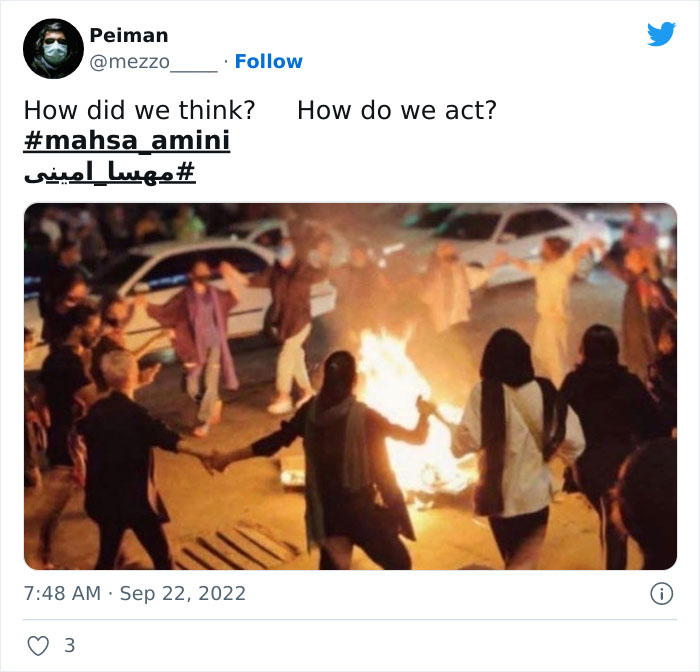
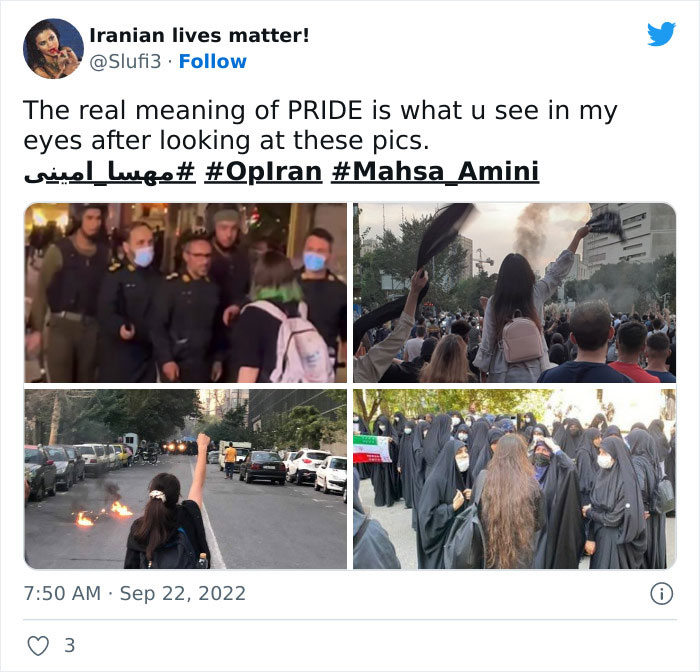
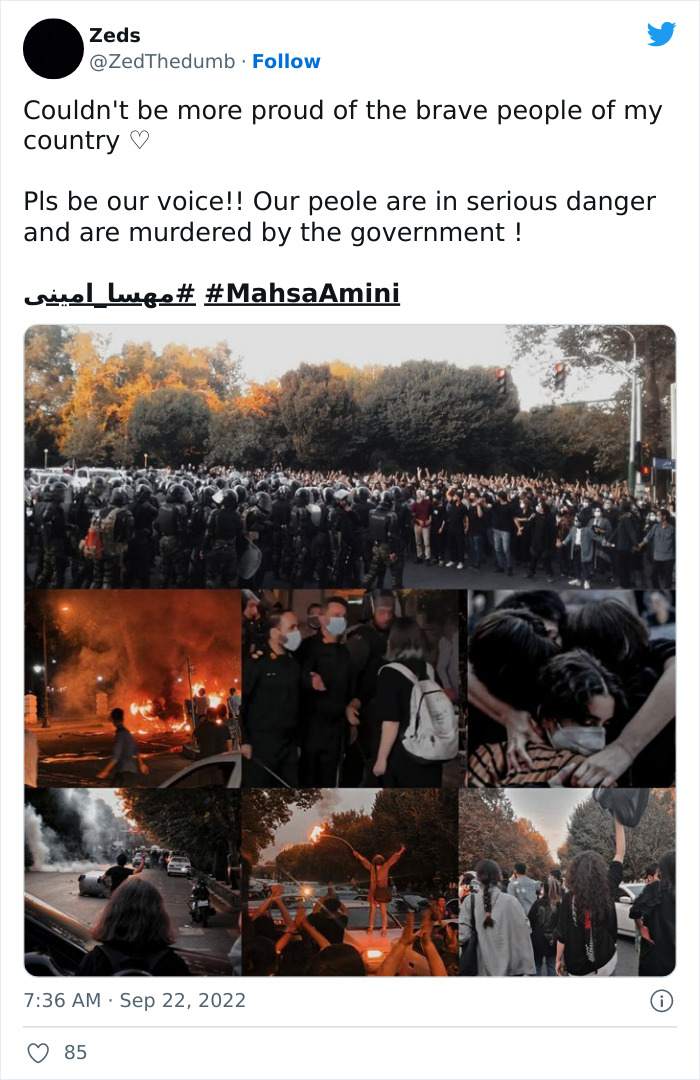
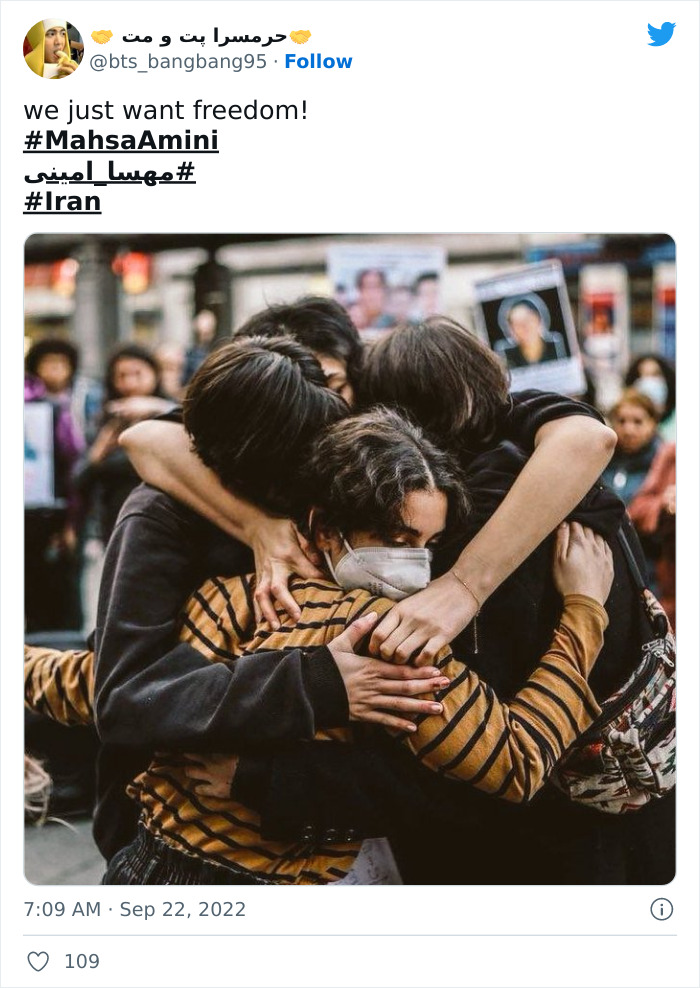
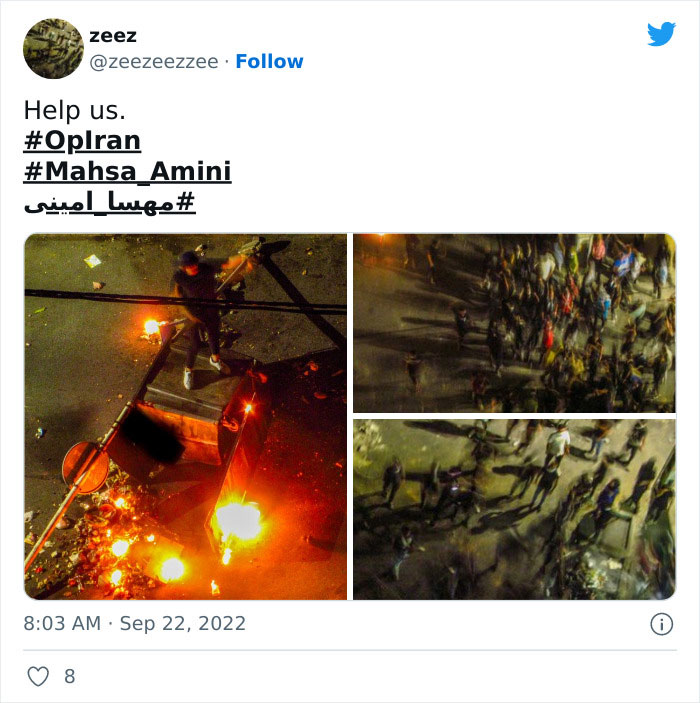
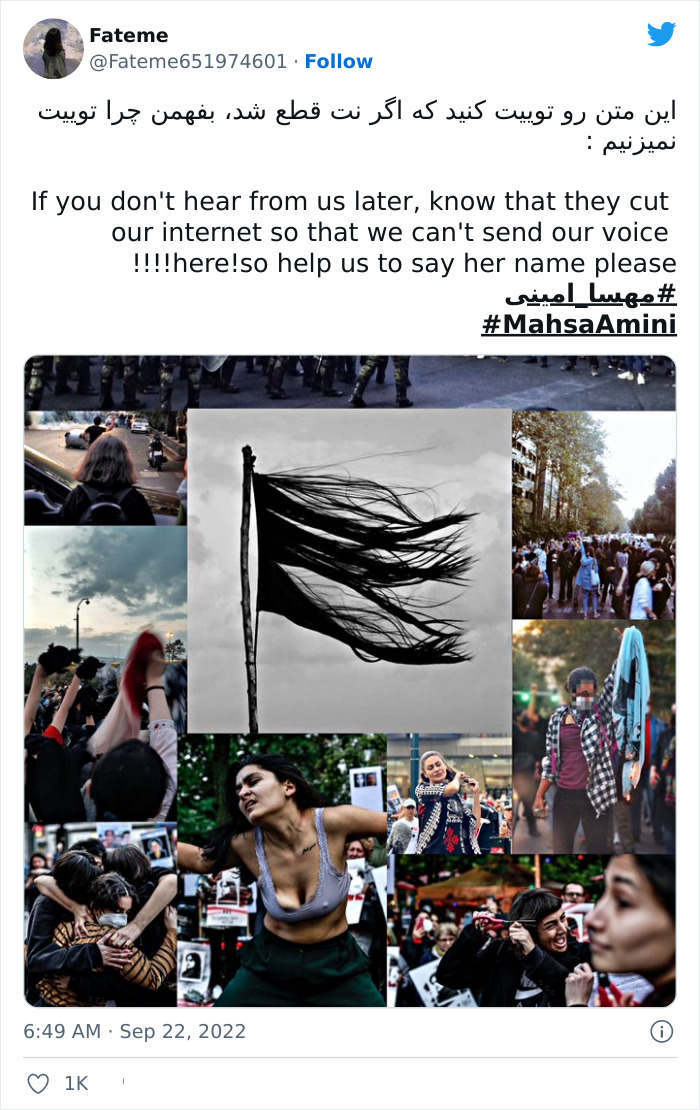











































295
37